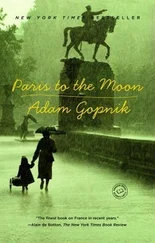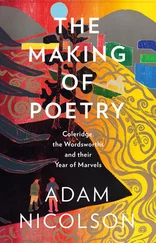Having made food a more fashionable object, we have ended by making eating a smaller subject. When “gastronomy” was on the margins of attention it seemed big because it was an unexpected way to get at everything —the nature of hunger; the meaning of appetite; the patterns and traces of desire; tradition, in the way that recipes are passed mother to son; and history, in the way that spices mix and, in mixing, mix peoples. You could envision through the modest lens of pleasure, as through a keyhole, a whole world; and the compression and odd shape of the keyhole made the picture more dramatic. Now the door is wide open, but somehow we see less, or notice less, anyway. Betrayed by its enlargement, food becomes less intimate the more intensely it is made to matter.
I love to eat. I love to eat simple food and I love to eat fancy food. I love to eat out and I love to eat at home. I love the Grand Véfour in Paris, where the banquettes are made of velvet and the food is filled with truffles, and I love the coffee shop down the street, where the eggs all come with greasy potatoes. I’ve loved to eat since I was little, when my mother, a terrific cook, would make all the dishes, large and small, near and far. I learned early on the simple path between eating well and feeling happy. And, as all eaters do, I also early on learned the short, sudden path between desire and disappointment: my first strong taste memory is of taking a deep bitter swig of vanilla extract in a dark closet into which I had sneaked the bottle, sure that something that smelled that good had to taste good, too. (It doesn’t.) If all my pleasures are gathered around the table, all my disillusions taste bitter, like that vanilla.
Getting older, with children of my own, I was trained enough to cook for them—my wife’s feminist mother had purposefully neglected her daughter’s kitchen tuition. And, over the years, I wrote a lot about cooking and eating, as a writer is bound to dwell on the things he loves. But though I had written happily about what food tasted like and what it looked like and also about the odd personalities of the people who made the best food, I was left, decades on, wondering: what did it really mean? Why did we care? What was, so to speak, the subject of food? The attempts to make food “art” I found embarrassing, and the attempts to make it adventure I found absurd. I recognized sexual politics in that effort, the result of traditionally women’s work now being done by men, including me. Men being men, they had to assert themselves by trying not to seem too obviously feminine, pretending that cooking was really just as macho as NASCAR, and so producing the taste for rattlesnake testicle ragout. And with the coming of Mr. Perfect, something more insidious happened: the sheer brunt and dailiness of women’s real lives—the everyday dance women still must do for family life to go on—was subtly undermined by the cooking husband, or host. (Putting on an apron and making a sauce is the easiest of household chores, and a neat way to escape doing the others.)
In place of Decour’s Big Questions, we had many small ones. Should we eat locally? Stop eating meat altogether, and if so, should we do it out of humanity or for our health? All questions worth answering—and yet, weren’t they still to one side of what we really felt when we came home to share dinner and felt happy when we did? Certainly within the new rites there were intimations of a new order, and of a new table, of a larger meaning to our questions of food. I could see, for instance, that in the past twenty-five years, two big things had happened in the world of fancy food. One was the growth of the pure-food movement, best captured in the name “slow food,” and which encompasses localism, seasonal cooking, farmers’ markets, organic produce—a whole host of interlocked activities and styles that spoke to the old, the past, the lost, the sustainable, the recoverable, heritage breeds, and forgotten peasant wisdoms. The other was the growth of “techno-emotional” cooking, as its founder, or anyway its first pope, Ferran Adrià, likes to call it, more often referred to as “molecular gastronomy.” Adrià and his apostles use gels and foams and aerations and freeze-dried powders, outré rearrangements and deconstructed plates: the gleeful appliqué of new technology to cooking. This doubleness suggested a kind of ongoing confrontation between two forces in life, the eternal-natural and the techno-inventive—a confrontation, so to speak, between Hestia, Queen of the Hearth and Home, and Willy Wonka, King of the magic mountain. (Hestia had nymphs and rustics on her side; Willy, an army of Oompa-Loompas.)
I wanted to imagine an apocalyptic final battle for the fate of food. But actually, though often opposed to each other in principle, the people who supported one didn’t fight much with the people who practiced the other. What were they really after? What was really going on with these questions? What did it all mean ? We shouldn’t intellectualize food, because that makes it too remote from our sensory pleasures; but we ought to talk as intelligently as we can about it, because otherwise it makes our sensory pleasures too remote from our minds. The knowledge that our senses are part of our intelligence is what makes us human. We alone know our fun. The sweetness in our morning coffee is at once a feeling, an idea, and a memory. Eating is an intelligent act, or it’s merely an animal one. And what makes it intelligent is the company of other mouths and minds. All animals eat. An animal that eats and thinks must think big about what it is eating not to be taken for an animal.
And so we turn back to the table. It was the eighth of July, 2004, and I was in the kitchen of the British chef Fergus Henderson at his whole-beast restaurant, St. John. The day before, bombs had exploded throughout London, as I was getting off the train from Paris, and the tragedy had made Henderson think more intently of the purpose of his craft.
“I don’t understand how a young couple can begin life by buying a sofa or a television,” he said indignantly to me. “Don’t they know the table comes first?” The table comes first . The table comes first, before the meal and even before the kitchen where it’s made. It precedes everything in remaining the one plausible hearth of family life, the raft to ride down the river of our existence even in the hardest times. The table also comes first in the sense that its drama—the people who gather at it, the conversation that flows across it, and the pain and romance that happen around it—is more essential to our real lives, and also to the real life of food in the world, than any number of arguments about where the zucchini came from, and how far it had to travel before it got here. If our questions of food matter, it is because they imply most of the big fights about who we are—our notions of clan and nation, identity and the individual. Civilization is mostly the story of how seeds, meats, and ways to cook them travel from place to place. The parts of that story are surely things that everyone should know, if only because they lead us to who we are. If our questions of food are to hold out the promise of self-knowledge that gastronomy once offered, we can’t ask them outside of history.
And so, thinking about questions of food turned me back to the subject of France, the old home of the eaters we have become. All the spice routes passed through Paris. And if they no longer do as much as they once did, that is part of the story, too. You don’t have to be too ardent a Francophile to see that thinking about the table and its rituals means thinking about France, about French history and French manners, just as you don’t have to be an Anglophile to know that understanding liberalism and its rhetoric means thinking about England. Even if you eat nothing but Thai noodles and Turkish kebabs, Paris looms somewhere on the horizon of your imaginings, if only in an awareness of where the idea of eclectic eating in big cities began.
Читать дальше












